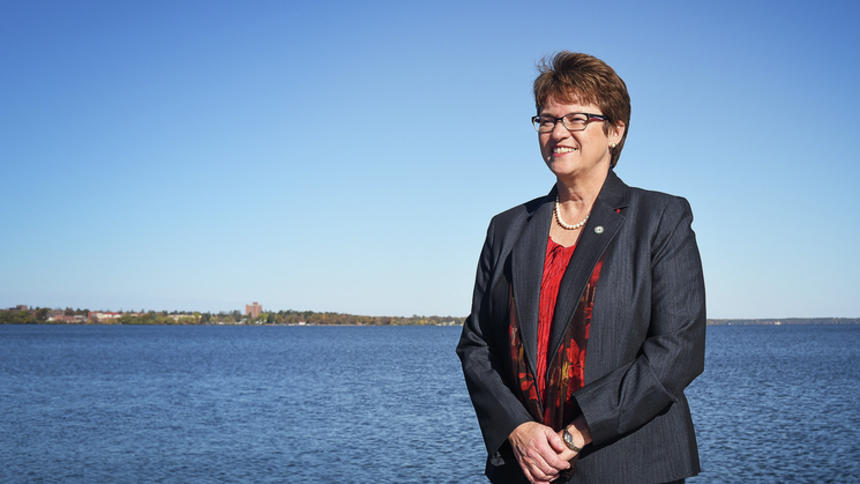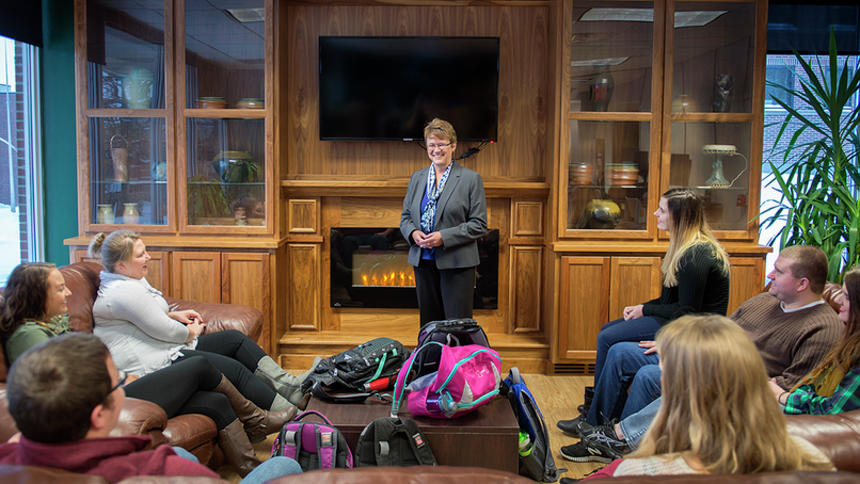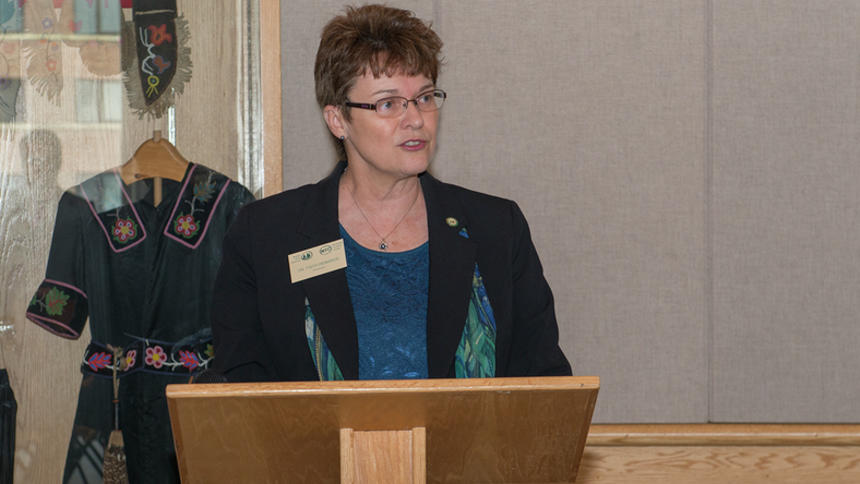BEMIDJI—Faith Hensrud formally became Bemidji State University and Northwest Technical College’s president at an inauguration ceremony last October, but she held that position for about four months before that.
She sat down with the Pioneer on Friday to talk about her first year—or 16 months, depending on how one measures—at the helm of the two schools.
“I would say it was very positive,” Hensrud said when asked to characterize her time on the job so far.
She said the school’s focus on recruiting American Indian students is it’s most critical. The school was selected for a grant to develop a combined curriculum between its environmental studies and indigenous studies programs, and received another to recruit more American Indian nursing students.
“What we were hearing, particularly when we were talking to Sanford Health, is the fact that they have a high need for American Indian nurses to help connect the cultural aspects as well as traditional medicine when they’re serving the American Indian population in the region,” Hensrud said.
What would she change about her first year?
“I wouldn’t change a thing,” Hensrud said. “I think it takes time to build the relationships both on the campus and in the community, and I think that it was a very successful year in that regard.”
Even with the benefit of hindsight, there’s nothing she’d do differently?
“No,” she said. “I think it was a very successful first year.”
At the technical college, Hensrud said she hopes to ensure that the programs there are relevant to Bemidji-area businesses and industry. The college’s nursing program has a clear connection to businesses such as Sanford, a regional healthcare giant.
“We need to figure out: what’s next?” Hensrud said. “What are some other programs that we need to develop to continue to meet the need and to even do a better job so that we’re really seen as the place for businesses to obtain their employees from?”
Adding an Emergency Medical Technician (EMT) program, for instance, could be on the horizon, or in manufacturing. The technical college’s enrollment has steadily declined for years, and Hensrud said that’s a product of reduced programming there and enrollment projections that didn’t pan out, which meant budget cuts. Technical college staff have tried to promote specific programs there to boost enrollment.
“We had a Dental Assisting Day and now our dental assisting program is filled,” Hensrud said. “Those are the types of strategies that we need to continue going forward so that we’re able to see some increased populations.”
Long-term planning
Finalizing the university’s long-term strategic plan is one upcoming challenge, Hensrud said, as is budgeting, which is an ever present challenge. BSU had to trim about $1.5 million from its budget this fiscal year as it hiked student tuition and fees. The university and technical college are both part of the Minnesota State system, where staff predicted a “state appropriation funding cliff” last June. In a nutshell: Minnesota State staff said the funding structure handed to them by state lawmakers will present the system with a $33.8 million structural deficit next year.
Hensrud said the university has set aside funds from its state appropriation for this year to cover costs for next year. Assuming enrollment doesn’t increase and the school’s unions get a cost-of-living adjustment in their next contract: “I would think we’re fine,” budget-wise, she said.
“That’s more or less the scenario that had been assumed, going forward,” Director of Communications and Marketing Scott Faust said.
If Minnesota State’s projected deficit comes to pass, would the university trim its budget further?
“I can’t tell you if we would do cuts or if we wouldn’t do cuts until I see what happens,” Hensrud said. “I’m not even gonna go out on that limb.”
If state lawmakers set aside in a bonding bill money for the university’s hoped-for project to replace the aging Hagg-Sauer building, the school could save millions in deferred maintenance costs, she said.
Hensrud and other university leaders hope to increase enrollment there and are working on a set of specific goals to put into the upcoming strategic plan. The 4,500 full-time students the university’s Strategic Enrollment Management Plan committee hopes to see enroll by the 2019-2020 school year is a “number for now,” she said.
“We have only 117 international students at this institution, and if I think of a headcount of 5,100 and only 117 are international students, I say we can do better,” Hensrud said. “Is it a real good climate nationwide for attracting international students? Not in some areas. But I believe that there’s much more that we can do to grow there.”



